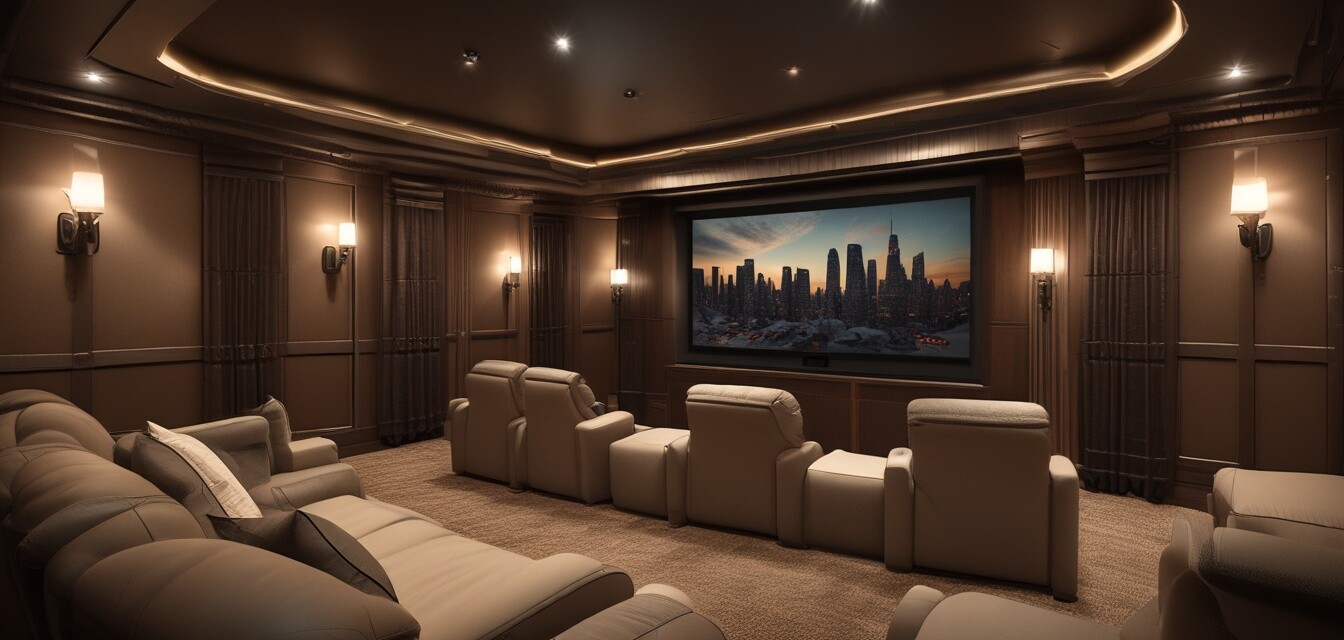
Creating a Home Theater Room with Soundproofing
Key Takeaways
- Soundproofing is essential for a high-quality home theater experience.
- Use acoustic treatments, insulation, and soundproof materials to minimize noise.
- Placement and arrangement of furniture can significantly impact sound quality.
- Investing time in setup can enhance your immersive experience.
Creating an ideal home theater room involves more than just choosing the right components; effective soundproofing plays a critical role in achieving the best audio quality. By soundproofing your home theater, you can minimize outside noise and improve the overall listening experience, ensuring clarity and immersion in your favorite movies and music.
Why is soundproofing important?
Soundproofing your home theater reduces external noise interference and prevents sound leakage. Here are some reasons why it matters:
- Enhanced audio clarity: Minimizes disruptions from outside sounds, allowing for a more immersive experience.
- Better sound isolation: Prevents sound from escaping your theater to other rooms.
- Improved acoustics: Optimizes sound quality within the room, contributing to clearer audio reproduction.
- Increased comfort: Creates a quieter atmosphere for relaxation while viewing.
Components of effective soundproofing
To effectively soundproof your home theater, consider incorporating the following components:
| Material | Purpose |
|---|---|
| Acoustic panels | Absorb sound waves and reduce echoes. |
| Soundproof curtains | Block external noise and prevent sound leakage through windows. |
| Underlayments | Provide sound insulation under flooring. |
| Weatherstripping | Seal gaps around doors to prevent sound infiltration. |
| Mass-loaded vinyl (MLV) | Heavy material that adds mass to walls, reducing sound transmission. |
Tips for soundproofing your home theater room
Beginner's Tips
- Choose the right location: Select a room that is naturally quieter and isolated from external noise sources.
- Use rugs and carpets: Install thick rugs to help absorb sound and reduce echo.
- Seal gaps: Inspect doors and windows for any gaps, using weatherstripping to seal them properly.
- Opt for thicker walls: When building or renovating, consider using thicker walls or double drywall for sound insulation.
- Test your setup: After installation, play various audio formats to check for sound leaks and adjust your setup as necessary.
Furniture placement for optimal acoustics
How you arrange your furniture can make a significant impact on sound quality. Consider these placement tips:
- Place the speakers in a symmetrical arrangement for balanced sound distribution.
- Position the seating at the right distance from the screen to enhance the viewing and listening experience.
- Avoid placing furniture against walls; instead, leave space for sound waves to travel freely.
- Incorporate bookcases or plants as natural sound absorbers between speakers and walls.
Maintaining your soundproofed home theater
Once your home theater is soundproofed, proper maintenance is key to ensuring continued performance:
- Regularly check and replace any worn-out soundproofing materials.
- Keep curtains and acoustic panels clean to maintain sound absorption properties.
- Reassess your setup periodically to adapt to changes in furniture or equipment.
- Invite friends or family over to test your theater; fresh ears can identify areas for improvement.
Conclusion
Creating a soundproof home theater room is not merely a luxury; it's a necessity for anyone serious about enjoying high-quality audio experiences. By incorporating the right soundproofing materials and strategies, you can transform any space into a sanctuary of sound. For more setup tips and advice, explore our Setup Tips category to elevate your home theater experience.
Pros
- Increases audio quality and immersion.
- Reduces outside noise interference.
- Enhances comfort during viewing.
- Improves overall acoustic performance.
Cons
- Initial investment can be significant.
- Installation may require professional help.
- Some materials may degrade over time and need replacement.

